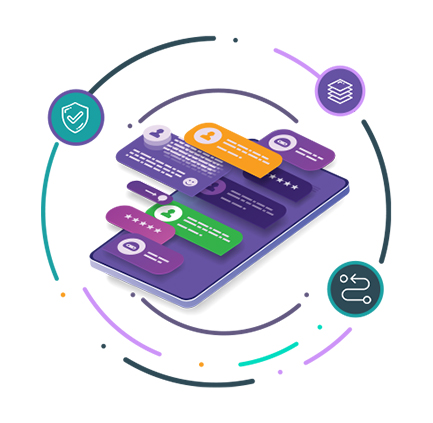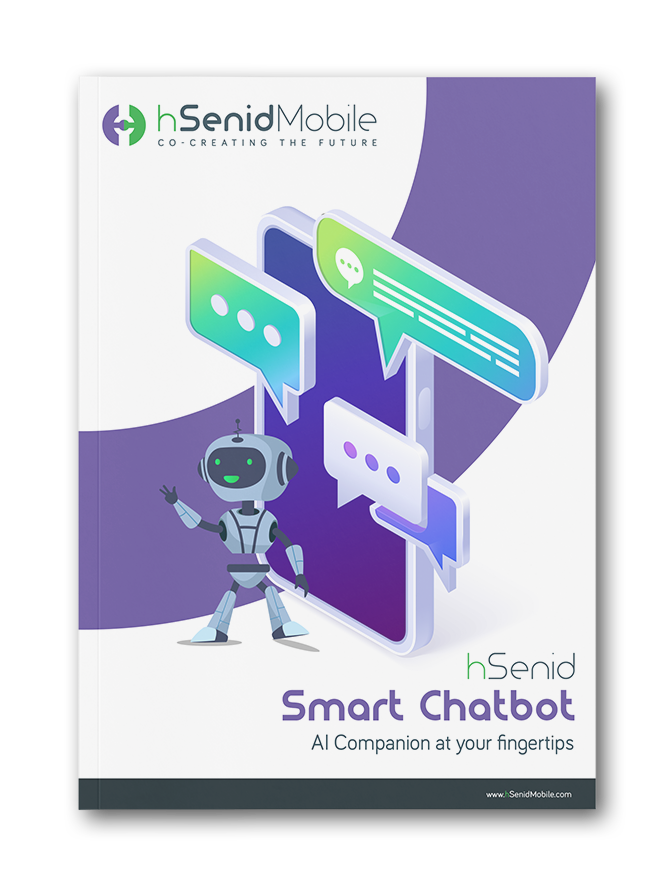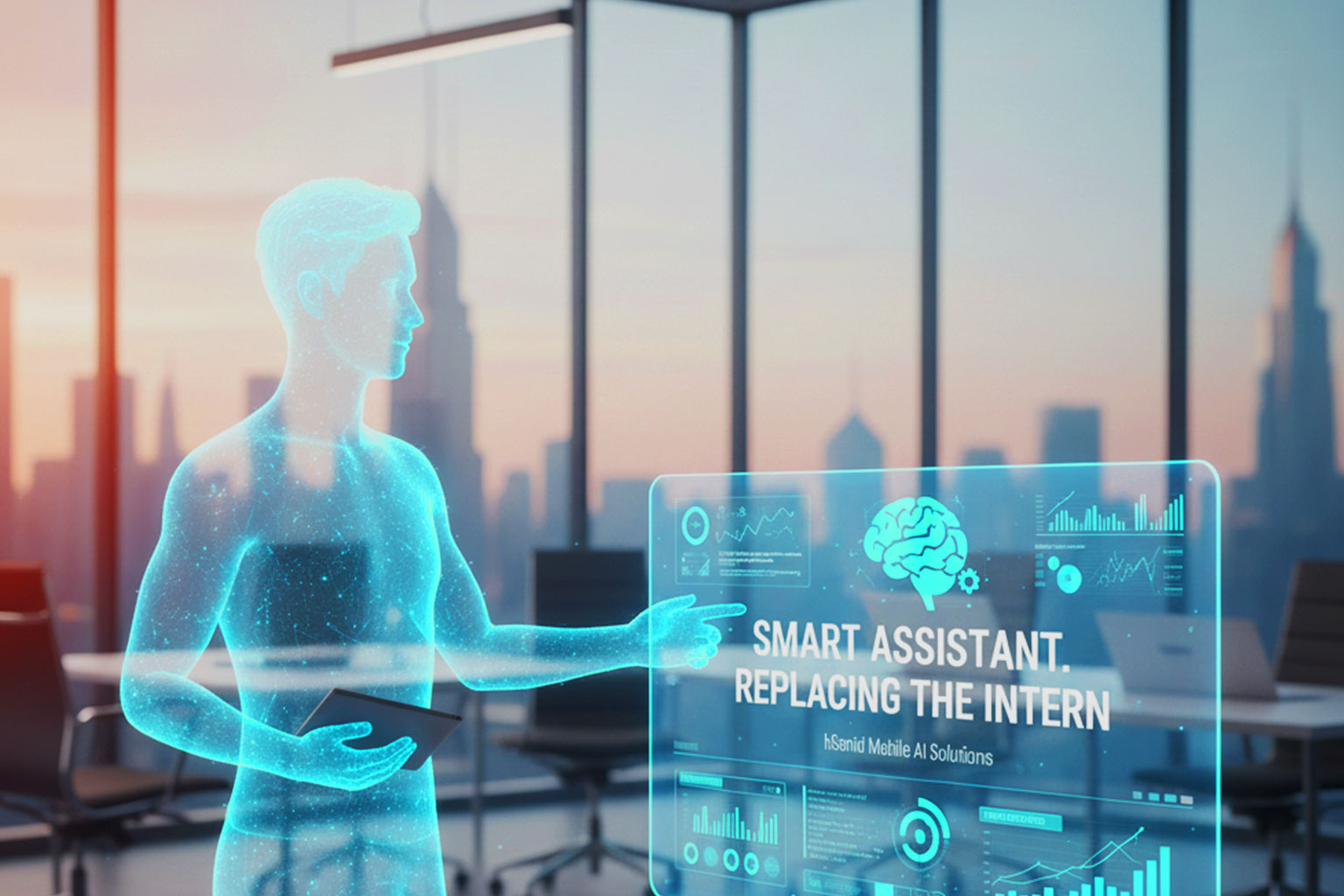Artificial Intelligence has quietly become the invisible engine powering business transformation across every industry. From digital banking to HR automation, AI-driven systems are redefining how organizations operate. But one question remains on every leader’s mind: Are smart AI chatbots truly intelligent, or just sophisticated scripts?
The difference lies not in how they talk, but in how they think. True intelligence goes beyond giving the right answer. It’s about understanding context, adapting behavior, and learning from every conversation. And that’s where modern smart AI chatbots are changing the game.
Today’s smart AI chatbots, like hSenid Mobile’s Smart Chatbot, represent a new generation. They are powered by advanced Natural Language Processing (NLP), Machine Learning (ML), and speech recognition. These technologies allow the bot to truly understand intent and respond dynamically, instead of reacting to keywords or triggers (Source: hSenid R&D).
When a user types or says, “I need to check my balance and transfer money to my savings,” a scripted bot would break. A smart AI chatbot processes the entire intent, identifies two actions, verifies authentication, and executes both tasks through API integrations. That’s intelligence in motion.
This multi-layered approach turns a chatbot from a reactive script into an adaptive assistant that understands and acts intelligently across complex scenarios (Source: hSenid R&D).
Smart AI chatbots, in contrast, use real-time learning and contextual memory. They not only respond intelligently but also refine future conversations. Over time, they become more accurate, efficient, and human-like.
If a user expresses irritation or stress, the chatbot doesn’t reply robotically. It responds with empathy, “I understand this must be frustrating. Let’s fix it together.” and, when required, escalates to a human agent seamlessly.
This blend of empathy and automation is what separates a customer experience that feels transactional from one that feels human.
hSenid’s Smart Chatbot includes a built-in analytics dashboard that tracks conversation success rates, sentiment levels, and learning improvements, ensuring continuous optimization (Source: hSenid R&D).
The distinction is clear: scripted bots only talk; smart bots truly communicate.
Imagine logging into your app and being greeted with, “Your loan payment is due tomorrow. Would you like to schedule it now?” That’s the future of customer experience; proactive, predictive, and personalized.
Multilingual NLP, voice biometrics, and edge AI will make these systems even more natural and contextually aware. They will adapt to local languages, cultural nuances, and real-time events, making interactions smoother and more human than ever before.
Yes, many bots today still rely on scripts. But true intelligence comes from adaptability, empathy, and learning. That’s what defines solutions like hSenid Smart Chatbot, a system designed not just to talk, but to think.
Because in the modern digital economy, the real question isn’t “Are chatbots intelligent?” It’s “Can your business afford one that isn’t?”
Explore how Smart Chatbot transforms your operations. Talk to us about implementing this solution today.
The difference lies not in how they talk, but in how they think. True intelligence goes beyond giving the right answer. It’s about understanding context, adapting behavior, and learning from every conversation. And that’s where modern smart AI chatbots are changing the game.
The Evolution: From Scripted Bots to Thinking Machines
Early chatbots were nothing more than digital forms dressed up as conversations. They followed rigid decision trees, giving predefined answers to limited questions. Users quickly recognized their mechanical nature.Today’s smart AI chatbots, like hSenid Mobile’s Smart Chatbot, represent a new generation. They are powered by advanced Natural Language Processing (NLP), Machine Learning (ML), and speech recognition. These technologies allow the bot to truly understand intent and respond dynamically, instead of reacting to keywords or triggers (Source: hSenid R&D).
When a user types or says, “I need to check my balance and transfer money to my savings,” a scripted bot would break. A smart AI chatbot processes the entire intent, identifies two actions, verifies authentication, and executes both tasks through API integrations. That’s intelligence in motion.
Understanding the Layers of Intelligence
To understand what makes a chatbot “smart,” we must look beneath the surface. Intelligence in a chatbot is built on several cognitive layers that mirror human communication.1. Understanding and Context Awareness
Smart chatbots don’t just hear words; they understand meaning. Using NLP, they analyze tone, emotion, and phrasing. For example, the hSenid Smart Chatbot uses sentiment analysis to detect user frustration and respond empathetically or escalate to a live agent when necessary.2. Continuous Learning
Machine learning allows a chatbot to evolve over time. With every user interaction, it gets better at predicting intent and recognizing patterns. hSenid’s trainable bot model continuously retrains itself with new data, eliminating the need for constant manual updates (Source: hSenid R&D).3. Decision Making and Action
True intelligence involves decision-making. In digital banking, for instance, the hSenid Smart Chatbot can verify a customer, confirm a transaction via OTP, and complete payments securely — all within the same conversation.4. Human-like Reasoning
An intelligent chatbot doesn’t rely solely on programmed rules. If a user says, “I think I was charged twice,” it doesn’t just search for “charge.” Instead, it accesses transaction data, interprets the issue, and replies with clarity. This reasoning ability bridges the gap between automation and empathy.Inside the Smart Chatbot Engine
What gives the smart AI chatbot its intelligence isn’t one single algorithm, but a combination of interdependent technologies working together:- Natural Language Understanding (NLU): Recognizes speech, syntax, and intent.
- Speech Recognition: Converts voice input to text with accuracy even amid background noise.
- Machine Learning Models: Improve prediction and precision with every user conversation.
- API Integration: Connects with CRMs, ERPs, and banking systems for real-time actions.
- Voice Biometrics and Sentiment Analysis: Detect emotion and verify identity for secure, personalized service.
This multi-layered approach turns a chatbot from a reactive script into an adaptive assistant that understands and acts intelligently across complex scenarios (Source: hSenid R&D).
Real Intelligence in Action
The strength of smart AI chatbots lies in their real-world application. Below are some practical examples that prove how intelligence, not scripting, drives outcomes.1. Conversational Banking
hSenid’s Smart Banking Chatbot enables users to check balances, pay bills, and transfer funds using natural voice commands. It authenticates via secure APIs and processes requests in seconds. Beyond convenience, this hands-free conversational banking is also inclusive, supporting users with physical or visual limitations (Source: hSenid R&D).2. Employee Productivity in Digital Workspaces
Within enterprises, the hSenid Smart Chatbot acts as a 24/7 virtual assistant. Employees can request HR information, book leave, reset passwords, or log IT issues instantly through platforms like Microsoft Teams or intranets. By centralizing access, organizations reduce administrative delays and improve employee satisfaction.3. Crisis and Continuity Management
During operational disruptions, such as the pandemic, many organizations relied on smart chatbots for constant communication. hSenid’s chatbot handled updates, answered employee FAQs, and supported customers when staff were unavailable. These AI companions ensured that business continuity never broke under pressure.Why Scripted Bots Still Exist
Despite the clear advantages, many businesses still deploy basic bots disguised as “AI.” These scripted chatbots are rule-based. They cannot interpret nuances, learn autonomously, or integrate deeply with business systems. They offer limited responses that often frustrate users after a few interactions.Smart AI chatbots, in contrast, use real-time learning and contextual memory. They not only respond intelligently but also refine future conversations. Over time, they become more accurate, efficient, and human-like.
Emotional Intelligence: The Human Touch in AI
One of the most revolutionary advances in conversational AI is emotional intelligence. Smart chatbots are now capable of detecting mood through sentiment analysis and adjusting tone accordingly.If a user expresses irritation or stress, the chatbot doesn’t reply robotically. It responds with empathy, “I understand this must be frustrating. Let’s fix it together.” and, when required, escalates to a human agent seamlessly.
This blend of empathy and automation is what separates a customer experience that feels transactional from one that feels human.
How to Measure True Intelligence
Not all chatbots that claim to be intelligent truly are. Here are the key metrics that determine whether your bot is genuinely smart:- Intent Recognition Accuracy: How well it understands varied phrasing.
- Learning Agility: Whether it improves on its own over time.
- Personalization: Ability to tailor responses to individual users.
- Emotional Responsiveness: Ability to detect and adapt to sentiment.
- System Integration Depth: How well it connects with live business systems like CRMs, ERPs, or payment networks.
hSenid’s Smart Chatbot includes a built-in analytics dashboard that tracks conversation success rates, sentiment levels, and learning improvements, ensuring continuous optimization (Source: hSenid R&D).
Smart Chatbots vs Scripted Bots
| Feature | Scripted Chatbot | Smart AI Chatbot |
|---|---|---|
| Response Type | Predefined | Contextual and dynamic |
| Learning Ability | None | Continuous self-learning |
| Language Understanding | Limited | Advanced NLP-driven |
| Integration | Static | Deep API-based connectivity |
| Emotional Awareness | Absent | Sentiment-driven |
| Use Cases | FAQs and basic support | Banking, HR, analytics, customer service |
| Performance | Reactive | Predictive and proactive |
The distinction is clear: scripted bots only talk; smart bots truly communicate.
The Future: From Reactive to Predictive AI
The next evolution in chatbot intelligence is prediction. Soon, chatbots will not wait for commands. They will anticipate needs based on behavior patterns.Imagine logging into your app and being greeted with, “Your loan payment is due tomorrow. Would you like to schedule it now?” That’s the future of customer experience; proactive, predictive, and personalized.
Multilingual NLP, voice biometrics, and edge AI will make these systems even more natural and contextually aware. They will adapt to local languages, cultural nuances, and real-time events, making interactions smoother and more human than ever before.
Intelligence Is Not Just in Code, But in Connection
At its core, a smart AI chatbot isn’t built to replace humans but to empower them. It listens better, learns faster, and bridges the gap between digital systems and human expectations.Yes, many bots today still rely on scripts. But true intelligence comes from adaptability, empathy, and learning. That’s what defines solutions like hSenid Smart Chatbot, a system designed not just to talk, but to think.
Because in the modern digital economy, the real question isn’t “Are chatbots intelligent?” It’s “Can your business afford one that isn’t?”
Explore how Smart Chatbot transforms your operations. Talk to us about implementing this solution today.








